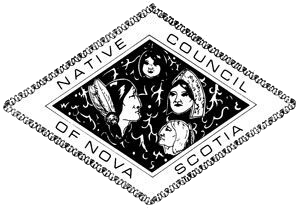Denouncing the Policy
By the end of the Second World War, with a new international Charter of Human Rights, and with the very visible results of government actions and decisions in Canada continuing a policy of subjugation, a need for change was evident. The social and economic situation and condition of all Aboriginal Peoples in Canada, and that of the Mi’kmaq on the East Coast had to change. The challenge: “how to begin and where to begin?”
How does a free and democratic country like Canada begin to end almost two hundred years of human suffering? How does Canada begin to acknowledge the reality and continuum of the First Peoples of this great land, and their tenacity and strength to remain as the Aboriginal Peoples of Canada? How do Aboriginal Peoples; after so much suffering, violation, stereotyping and demeaning of worth and denial of the person, move forward?
By the early 1950’s, Canadian Indian Policy- the Indian Act and Indian Administrative Measures were under national and international scrutiny and criticism as instruments created and implemented to violate the basic human rights and denial of the Aboriginal person of the Aboriginal Nations of Peoples. By the mid 1960’s it was evident that the Government Indian Policy; carried forward intact for almost two hundred years, had failed to realize its ultimate goal.
As a measure to begin some inclusion of the Aboriginal Peoples within Canada; in the mid 1960’s, Canada extended to the Canadian Indian a few fundamental human and civil rights. At the same time, Canada consciously continued to maintain and impose a larger measure of interference in Indian governance. Canada imposed and codified its concept of “Band Councils”, and a more intrusive “Indian Registration” list scheme, ignored treaty promises and further eroded traditional forms of Indian government and further divided Aboriginal Peoples.
A 1974 review of the historic development of Indian Policy, Indian Acts and Indian administration crystallized the horrific results of government decision makers actions and reveals an existing reality worthy to quote:
“Thus a policy devised in the 1830’s reiterated, elaborated and carried forward to Confederation almost intact, has served up to this day as the guiding star for administrators of Indian Affairs. Probably in no other sphere has such continuity or consistency or clarity of policy prevailed, probably in no other area has there been such a marked failure to realize ultimate objectives.”
The reality of our continuum as direct descendent Mi’kmaq on our traditional homelands not displaced to Indian Act Reserves, attests as evidence of this marked failure of government Indian policy, at the horrific expense of human suffering and indignity directed against the Aboriginal Peoples.
The Government of Canada in a 1997 response to the “Royal Commission on Aboriginal Peoples” report, acknowledged in the Government document “Gathering Strength – Canada’s Aboriginal Action Plan”, the devastating results on the Aboriginal Peoples of Canada by Indian Policy consistently applied over the past two hundred years:
“Our history with respect to the treatment of Aboriginal Peoples is not something in which we can take pride. Attitudes of racial and cultural superiority led to a suppression of Aboriginal cultures and values…weakening the identity of Aboriginal Peoples, suppressing their languages and cultures, outlawing spiritual practices. We must recognize the impact of these actions on the once self sustaining nations, disaggregated, disrupted, limited and even destroyed by the dispossession of traditional territory, by the relocation of Aboriginal Peoples and by some provisions of the Indian Act”.
